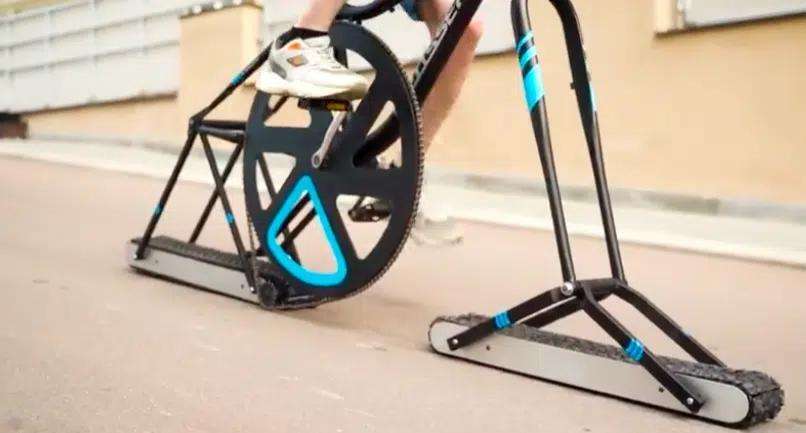
Ships are one of the most important inventions in human history. They have enabled trade, exploration, migration, warfare, and cultural exchange across the oceans and continents.
Without ships, the world would be a very different place.
In this article, we will take a look at the history and evolution of ships, from the earliest rafts and canoes to the modern marvels of engineering and design.
We will also see how ships have influenced the development of civilization, economy, politics, and culture throughout the ages.
The Origins of Ships: Rafts and Canoes
The earliest forms of ships were simple rafts and canoes, made from logs, reeds, or animal skins. These vessels were used for fishing, hunting, and transportation on rivers and lakes.
The oldest evidence of rafts and canoes dates back to the Paleolithic era, more than 10,000 years ago.
Some of the earliest civilizations, such as Mesopotamia, Egypt, and China, developed more advanced rafts and canoes, using sails, paddles, and oars.
These vessels allowed them to navigate the larger bodies of water, such as the Mediterranean Sea, the Nile River, and the Yellow River. They also enabled them to trade with other cultures, exchange goods and ideas, and expand their territories.
The Rise of Sailing Ships: The Ancient and Medieval Periods
The next major innovation in shipbuilding was the invention of sailing ships, which used wind power to propel them across the seas.
Sailing ships were first developed by the ancient civilizations of the Near East and the Mediterranean, such as the Phoenicians, the Greeks, and the Romans.
These ships had wooden hulls, masts, and sails, and could carry larger cargoes and crews than rafts and canoes.
Sailing ships were used for various purposes, such as commerce, exploration, colonization, and warfare.
Some of the most famous sailing ships of the ancient and medieval periods include:
- The trireme, a warship with three rows of oars, used by the Greeks and the Persians in the 5th and 4th centuries BC.
- The bireme, a warship with two rows of oars, used by the Romans and the Carthaginians in the 3rd and 2nd centuries BC.
- The galley, a warship with one or more rows of oars, used by the Byzantines, the Arabs, and the Vikings in the 1st millennium AD.
- The cog, a merchant ship with a single mast and a square sail, used by the Europeans in the 12th and 13th centuries AD.
- The caravel, a small and fast ship with two or three masts and triangular sails, used by the Portuguese and the Spanish in the 15th and 16th centuries AD.
The Age of Discovery: The Renaissance and the Enlightenment
The 15th and 16th centuries AD marked the beginning of the Age of Discovery, a period of global exploration and expansion by the European powers.
This was made possible by the development of new types of sailing ships, such as the carrack, the galleon, and the fluyt. These ships had larger hulls, more masts, more sails, and more cannons than the previous ships, and could travel longer distances and withstand harsher weather conditions.
The Age of Discovery saw the discovery of new lands, such as the Americas, Africa, Asia, and Australia, by explorers such as Christopher Columbus, Vasco da Gama, Ferdinand Magellan, and James Cook.
It also saw the establishment of trade routes, colonies, and empires by the Europeans, as well as the exchange of goods, people, animals, plants, diseases, and cultures between the Old and the New Worlds.
The Industrial Revolution: The 18th and 19th Centuries
The 18th and 19th centuries AD witnessed the Industrial Revolution, a period of rapid economic and social change driven by the development of new technologies, such as the steam engine, the railway, and the telegraph.
The Industrial Revolution also had a profound impact on the evolution of ships, as new materials, such as iron and steel, and new sources of power, such as steam and coal, were introduced.
The first steamships, which used steam engines to drive paddle wheels or propellers, appeared in the late 18th and early 19th centuries.
These ships were faster, more reliable, and more independent of wind and weather than sailing ships, and could carry more passengers and cargo.
Steamships were used for various purposes, such as trade, transport, communication, and warfare. Some of the most famous steamships of the 18th and 19th centuries include:
- The Clermont, the first commercially successful steamboat, built by Robert Fulton in 1807.
- The Savannah, the first steamship to cross the Atlantic Ocean, in 1819.
- The Great Western, the first steamship to cross the Atlantic Ocean regularly, in 1838.
- The Great Eastern, the largest steamship of its time, built by Isambard Kingdom Brunel in 1858.
- The Titanic, the most luxurious and infamous steamship of its time, built by Harland and Wolff in 1912.
The Modern Era: The 20th and 21st Centuries
The 20th and 21st centuries AD have seen the development of new types of ships, such as the motor ship, the container ship, the cruise ship, and the nuclear-powered ship.
These ships have used new materials, such as fiberglass and aluminium, and new sources of power, such as diesel, gas, and nuclear energy, to achieve higher speeds, greater efficiency, and lower emissions than the previous ships.
They have also used new technologies, such as radar, GPS, and automation, to improve navigation, safety, and communication.
Modern ships have been used for various purposes, such as commerce, tourism, research, and defence. Some of the most famous modern ships include:
- The Maersk Triple E, the largest container ship in the world, launched in 2013.
- The Oasis of the Seas, the largest cruise ship in the world, launched in 2009.
- The USS Nimitz, the largest aircraft carrier in the world, launched in 1975.
- The Nautilus, the first nuclear-powered submarine, launched in 1954.
- The Rainbow Warrior, the flagship of the environmental organization Greenpeace, launched in 1989.
Conclusion
Ships have played a vital role in the history and evolution of humanity. They have enabled us to explore, trade, migrate, and communicate across the oceans and continents.
They have also influenced the development of civilization, economy, politics, and culture throughout the ages.
Ships have also evolved over time, from the simple rafts and canoes of the ancient times to the complex and sophisticated vessels of the modern day.
They have used different materials, sources of power, and technologies to adapt to the changing needs and challenges of the maritime world.
Ships have changed the world, and the world has changed ships. They are a fascinating and inspiring subject of study, and a testament to the human ingenuity and creativity.
I hope you enjoyed this article. If you did, please share it with your friends and leave a comment below. Thank you for reading! 😊
RELATED ARTICLES
- 5 Best Yachts For Vacation & Adventure and How to Choose the Right One for your Needs
- The Future of Underwater Exploration: Submarines for Science and Tourism










My partner and I stumbled over here from a different website and thought I may
as well check things out. I like what I see
so now i’m following you. Look forward to looking at your web page again.
What you published was very reasonable. However, what
about this? suppose you composed a catchier title? I ain’t
saying your content is not solid, however what
if you added a headline that makes people desire more?
I mean The History and Evolution of Ships: From Ancient Times to Modern Day –
Ternet Digital is a little boring. You should look at
Yahoo’s home page and see how they write news titles to
grab people to click. You might try adding a video
or a pic or two to grab people interested about
what you’ve written. In my opinion, it could make your blog a little
bit more interesting.
Добрый день всем!
[b]Хочу Купить Диплом[/b]
Система образования как мы уже говорили ранее, остро нуждается в реформировании.https://saksx-diploms-srednee24.com/ При обнаружении недочетов, или ошибок, что случается крайне редко, документ отправляется назад и бесплатно переделывается. Решение суда об усыновлении ребенка, вступившее в законную силу.